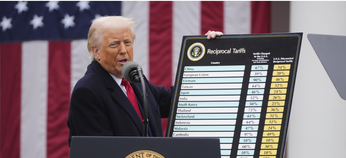
How did the Kremlin squander Syria
After more than 20 years in power, Syrian president Bashir Assad saw his regime collapse in the space of two dramatic weeks. Russia, mired in its own war in Ukraine, did not come to the rescue, largely leaving him to face the country’s opposition forces alone. Nine years ago Moscow invested huge time and effort in saving Assad’s regime at the peak of the civil war. This time it lacked both the strength and resources.
- Moscow’s alliance with Syria dates back to the Cold War, with Russia having maintained geopolitical influence in the three decades after the Soviet Union’s collapse. Syria was a long-term buyer of Russian weapons, and its Mediterranean port of Tartus is home to a logistics center for the Russian navy — an important strategic asset for Russia, and Moscow’s most important naval base.
- After the outbreak of civil war, Russia and the West tried to work together to resolve the conflict but were unable to achieve anything through talks. In 2015, the situation turned dire for Damascus as Islamic State fighters began to seize provincial Syrian cities and Assad’s regime appeared more fragile than ever. Russia swooped to his aid, launching a full-scale military operation to support the Syrian government army. Russia’s decision was at least partly motivated by the Kremlin’s need to prove that it was still an important player on the international arena after the imposition of sanctions and threats of global isolation after the annexation of Crimea in 2014.
- Moscow’s military support never involved any official Russian soldiers on the ground. Russian airstrikes were carried out in sorties launched from the Syrian air base at Khmeimim. Although Russia said it was targeting “terrorists” and “extremists” it quickly became clear that Syrian opposition forces were also being targeted by these strikes. In terms of a ground presence, mercenaries from the Wagner Group played an important role, acting in partnership with the Russian military command in Syria. When their soldiers were killed, Russia would respond by claiming that it did not work with any private military companies (this position completely changed after the invasion of Ukraine). This allowed Russian generals to attach themselves to any paramilitary units’ successes on the ground, while the authorities could deny Russian losses in Syria.
- The active phase of the operation was over by the end of 2017 and the bulk of Russia’s forces and assets were withdrawn. Syria became the most important logistics hub for Russian soldiers and mercenaries, with Wagner Group forces travelling through there to fight in African countries like Sudan, Libya, Mali and the Central African Republic.
- Even after active operations came to an end, Russian planes continued strikes against Syrian opposition positions. For example, in August last year they attacked the base of the Islamist Hayrat Tahrir al-Sham (HTS), whose troops led the shock offensive that toppled Assad. At the time, and until recently, the Russian authorities described the opposition as “militants” and “terrorists” — but since the fall of Assad, the rhetoric has changed. The same thing happened on Russian state TV.
- In the face of the offensive, Russia refused to save Assad’s regime and hastily withdrew its warships from its Syrian base. Pro-war bloggers believe that Russia has completely abandoned Syria, and both the Khmeimim military base and the naval base at Tartus will be “withdrawn.”
Why the world should care
Since the start of the offensive, attention on the Kremlin has intensified. The question was whether Moscow would again, as in 2015, rush to Assad’s aid. There were no surprises: Russia is too busy with its war in Ukraine and there are simply not the resources — manpower or equipment — to launch another full-scale military operation.
If we believe reports from Russian agencies, Assad and his family are in Moscow, where Russia has granted them asylum. If that’s the case, it turns out that the former Syrian leader has ended up sharing the fate of ex-Ukrainian president Vladimir Yanukovych, who fled Kyiv in 2014 in the face of the Euromaidan protests. Ironically, in 2014, Assad had tried to reassure Putin that he was no Yanukovych and would never flee Syria.



PAID SUBSCRIPTION LAUNCH
From May 1, 2025, The Bell in English will no longer be free
From May 1, 2025, all The Bell’s newsletters and online content will be behind a paywall. We have taken this decision so that The Bell can remain financially independent, and maintain our high standards of journalism and economic expertise






